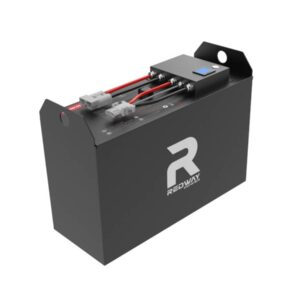How many volts should a forklift battery have?
Forklift batteries typically operate at 24V, 36V, 48V, or 80V, depending on the equipment’s power demands. Smaller electric forklifts often use 24V or 36V systems, while heavy-duty models require 48V–80V lithium-ion or lead-acid packs for sustained torque and runtime. Voltage selection hinges on load capacity, duty cycles, and motor specifications—higher voltages reduce current draw, minimizing heat and energy loss.
Key Considerations for Heavy-Duty Forklift Batteries
What factors determine forklift battery voltage?
Forklift voltage depends on load capacity, operating hours, and motor efficiency. Heavy loads (3–5+ tons) demand higher voltages (48V–80V) to maintain torque without excessive amperage. Prolonged shifts benefit from lithium-ion’s higher energy density at 48V+.

Practically speaking, a 24V system suits light loads (1–2 tons) with 6–8 hour shifts, while 80V packs power 10+ hour operations for 5-ton lifts. For example, a 48V 600Ah lithium pack delivers 28.8kWh—enough for 12 hours of pallet-jack use. Pro Tip: Always match voltage to controller ratings—mismatches cause premature MOSFET failures. But what if you choose the wrong voltage? Undervoltage strains components, while overvoltage risks insulation breakdown.
Are lithium forklift batteries higher voltage than lead-acid?
Lithium packs often use modular configurations to achieve 48V–80V, whereas lead-acid typically maxes at 48V. Lithium cells (3.2V–3.7V each) enable flexible series arrangements, unlike 2V lead-acid blocks requiring bulky 24-cell stacks for 48V.
Technically, a 48V lithium pack needs 15 LiFePO4 cells (15×3.2V=48V), while lead-acid requires 24 cells (24×2V=48V). This compactness lets lithium systems scale to 80V with 25 cells—ideal for high-throughput warehouses. Pro Tip: Lithium’s flat discharge curve maintains voltage stability under load, unlike lead-acid’s 20% sag. Ever seen a lift struggle mid-shift? That’s often lead-acid voltage drop reducing motor RPM.
| Type | Voltage Range | Cells Needed for 48V |
|---|---|---|
| LiFePO4 | 48V–80V | 15 |
| Lead-Acid | 24V–48V | 24 |
How does voltage affect forklift performance?
Higher voltages enhance efficiency by lowering current for equivalent power (P=IV). A 48V system drawing 200A outputs 9.6kW, while 24V needs 400A—doubling copper losses and heat generation in cables.
Beyond energy math, 48V–80V systems reduce cable thickness by 50–75%, saving weight and cost. For instance, a 80V 300A system uses 4/0 AWG cables versus 24V’s 750MCM for the same 24kW output. Pro Tip: Use PWM-based chargers for high-voltage lithium—they prevent cell overvoltage during top-ups. What happens if you ignore this? BMS lockouts and unbalanced cells requiring manual recalibration.
Battery Expert Insight
Optimal Forklift Battery Installation and Maintenance
FAQs
Can I replace a 36V lead-acid battery with 36V lithium?
Yes, but ensure the BMS supports your charger’s CV phase—lithium requires tighter ±0.5% voltage tolerance versus lead-acid’s ±2%.
Why do some forklifts use 80V batteries?
High-voltage (80V) systems minimize energy loss in large DC motors handling 10+ ton loads, especially in cold storage where battery resistance increases.
